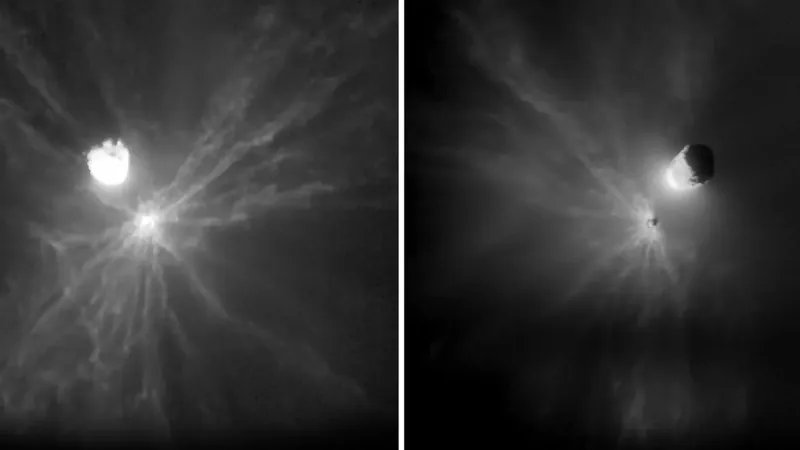
NASA's DART Mission's Asteroid Boulders Are Defying Expectations: What This Means for Planetary Defense
2025-07-15
Author: Sarah
Three years back, NASA made headlines by intentionally crashing a spacecraft into a massive asteroid—a bold move that showcased humanity's potential to shield Earth from "potentially hazardous" space debris. But recent findings indicate that the aftermath of this groundbreaking mission might be more complex than initially believed.
On September 26, 2022, NASA's Double Asteroid Redirection Test (DART) spacecraft collided with the asteroid Dimorphos at a staggering speed of 15,000 mph (24,000 km/h). This momentous impact not only altered Dimorphos' orbit, shortening its cycle around its companion asteroid Didymos by about 30 minutes, but it also reshaped the asteroid itself—a monumental milestone for planetary defense.
Yet, a fresh analysis published on July 4 in The Planetary Science Journal raises new concerns. Researchers discovered that numerous large boulders displaced by the collision are moving with unexpected momentum, and they're forming unusual patterns in space that defy randomness.
Utilizing images from the European Space Agency's Light Italian Cubesat for Imaging of Asteroids (LICIACube), which accompanied DART, scientists closely tracked 104 boulders ranging from 0.7 to 11.8 feet (0.2 to 3.6 meters) in size as they ejected from the asteroid. Alarmingly, these boulders exhibited about three times more momentum than predicted, likely due to an additional force imparted during the impact.
Tony Farnham, the lead author of the study and an astronomer at the University of Maryland, noted, "This additional factor changes the physics we need to consider when planning these types of missions." He pointed out that these boulders aren’t scattered randomly, but are grouped in distinct clusters with emptiness surrounding them—an indication that deeper unknown dynamics may be at play.
The team is eager to gather more insights to better prepare for any future asteroid deflection efforts. As co-author Jessica Sunshine aptly put it, "If an asteroid were barreling toward us, understanding these subtleties is crucial for effective planetary protection strategies. It’s like a cosmic pool game; we might miss our target if we overlook any variables."
Further adding to the intrigue, this isn’t the first time unexpected outcomes from the DART mission have been reported. Earlier this year, researchers warned that some of the larger boulders might end up on a collision path with Mars, posing potential risks to future colonies on the Red Planet—set to happen in about 6,000 years.
In August, simulations indicated that smaller fragments could enter Earth's atmosphere in around 30 years, potentially resulting in a dazzling meteor shower—but thankfully without posing a serious threat.
Despite these emerging uncertainties, the kinetic impactor method remains our best strategy for defending against real asteroid threats. The discussion around planetary defense continues, especially in light of recent budget cuts proposed for NASA, which could hinder our ability to track dangerous space rocks.

 Brasil (PT)
Brasil (PT)
 Canada (EN)
Canada (EN)
 Chile (ES)
Chile (ES)
 Česko (CS)
Česko (CS)
 대한민국 (KO)
대한민국 (KO)
 España (ES)
España (ES)
 France (FR)
France (FR)
 Hong Kong (EN)
Hong Kong (EN)
 Italia (IT)
Italia (IT)
 日本 (JA)
日本 (JA)
 Magyarország (HU)
Magyarország (HU)
 Norge (NO)
Norge (NO)
 Polska (PL)
Polska (PL)
 Schweiz (DE)
Schweiz (DE)
 Singapore (EN)
Singapore (EN)
 Sverige (SV)
Sverige (SV)
 Suomi (FI)
Suomi (FI)
 Türkiye (TR)
Türkiye (TR)
 الإمارات العربية المتحدة (AR)
الإمارات العربية المتحدة (AR)